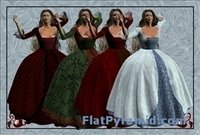What Are Texture Maps?

A texture map is used to create a unique surface upon the exterior of a 3D models. It could be compared to wrapping a box, or using other forms of paper, and material to completely cover the exterior of that box. Texture mapping allows not colors, but textures to be applied to the surface of 3D models. Texture mapping is one of the premier ways to add detail to a surface of a 3D model that has been computer generated.
On any given model, there can be multiple textures incorporated into each model. This process is referred to as “multitexturing”. When one or more surface is applied to the 3D model, such as a model of the earth that uses water, as well as terrain, more data is used within the model. When multiple textures are used on the surface, rendering processes can be slowed because of the excess amounts of data that requires conversion.
The two most common types of mapping are light mapping, and bump mapping. Light mapping refers to the process of lighting the surface in one step, rather than lighting each cell throughout the rendering process. Bump mapping refers to the process of adding texture to each area, giving the illusions of concrete surfaces found within light, such as sidewalks and beaches.Most 3D model programs incorporate methods to achieve quick results of texture mapping. Rather than mapping one pixel at a time, modelers are able to create complex surfaces with a few keystrokes.
Texture mapping is an important part of 3D modeling, as it incorporates the surfaces of everyday items and creates a genuine nature in each of the 3D models. Texture mapping incorporates the lighting, texture and color to create these surfaces of different heights, therefore creating the appearance of the complex surfaces such as cement, or bark on the trees. Without texture mapping, we would have flat surfaces on all of the 3D models that we have become familiar with.
